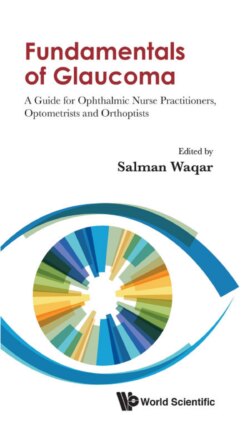Читать книгу Fundamentals Of Glaucoma: A Guide For Ophthalmic Nurse Practitioners, Optometrists And Orthoptists - Группа авторов - Страница 17
Secondary Angle Closure
ОглавлениеSecondary angle closure may be generated by any swelling of the posterior chamber of the eye, for example; iris/ciliary body/choroidal tumours, choroidal effusions secondary to chorio-retinal inflammation/scleritis or choroidal haemorrhage. Treatment is directed towards removing the provoking stimulus if possible.
It can also be caused by intraocular inflammation, whereby adhesions between the peripheral iris and the cornea (known as peripheral anterior synechiae) can contract and close the iridocorneal angle. This mechanism is also seen with fibrovascular sheets that can develop within the iridocorneal angle in neovascular glaucoma and close the angle.
The use of the anti-epileptic medication, Topiramate, can cause bilateral ciliary body oedema, thereby causing angle closure. Treatment is directed towards cessation of Topiramate and medical control of the intraocular pressure until the oedema resolves.
